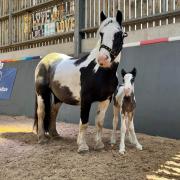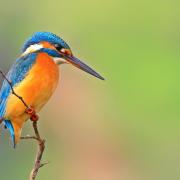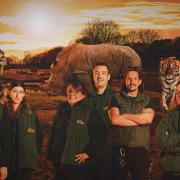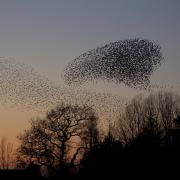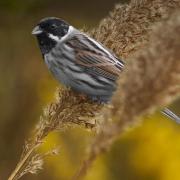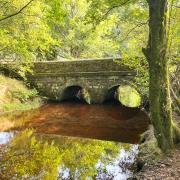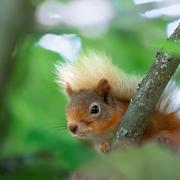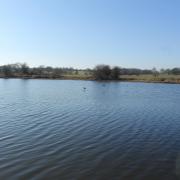The RSPB's Leighton Moss reserve near Carnforth is an important habitat for birds and a great place to re-connect with nature.
The frozen beauty of the reed bed was almost overwhelming for a young Jon Carter when he was first introduced to RSPB Leighton Moss by a family friend as a young lad.
The reserve charmed him enough to return from Morecambe by bicycle throughout his youth just to spend time in the quiet with the waders and swans.
Like a migratory bird, Jon Carter went off far afield to Canada to work as a graphic designer before returning to his native mere, where the position as Visitor Experience Manager had become available. ‘This was where I could combine my skills gained in media with my love for nature,’ says Jon on a windy day on top of RSPB Leighton Moss’s nine metre observation tower from which visitors can overlook the reedbeds and ponds of the reserve, nestled between the saltwater marshes of Morecambe Bay and Silverdale’s cedar groves.
‘It’s fair to say I’m invested in this place,’ says Jon who has worked at Leighton Moss for five years, during which time he has tried to encourage new demographics to come and visit. ‘Lockdown has helped people reconnect with their outdoor spaces,’ he says. ‘Many have realised that watching wildlife and birds is for everyone.’

Founded in 1889 by Lancaster-born Emily Williamson as the Society for Protection of Birds to help ban the use of plumage of fragile birds in fashion, the organisation received a Royal Charter in 1904. In 1921, the Prohibition for the import of plumage was passed which was the first successful campaign run by the RSPB. Today, the organisation is still at the forefront of the fight for a more sustainable future and to safeguard and enhance habitats for the ever-dwindling British bird and wildlife population.

‘Reserves such as Leighton Moss showcase our work, they inspire our visitors to think of their environment and their own impact on it,’ says Jon, spreading his arms over the largest reed bed in England’s North West. ‘This area would have looked similar since Mesolithic times,’ says Jon. ‘But these days it needs to be managed.’
In their natural cycle, reeds rot after a certain amount of time and the beds are claimed by woodland while new beds would establish themselves in different areas. That space for nature to work through its cycles doesn’t exist in our time, so beds need human help to be kept alive.

Reedbeds are a fragile habitat providing shelter for unique birds, such as the bittern, one of the UK’s rarest breeding birds. Leighton Moss is instrumental in their survival. Because the reedbeds make sightings difficult, individuals are heard more than seen. Each male has its distinct breeding call by which they can be separated. This year, staff counted six males which all found mates to breed.
‘These success stories keep us going,’ says Jon, who is witness to the impact of ever-enhancing weather extremes on the reserve. Droughts and heavy rain-fall seem to constantly interchange, which makes it hard to keep the reedbeds alive. Leighton Moss is now creating reed bed-cells where water-levels can be independently managed, which will make them safe breeding areas for birds such as the bittern whose nests would be washed away if they were exposed to torrential rains.
A flock of black-tailed godwits takes off in a whirr of wings and glides above the ponds like a wave, breaking and re-assembling, hypnotising the eye. A marsh harrier has caused the disruption, spreading its wings before landing on the shores, a king for whose progress the people scatter. In the 1970s, only a single pair was recorded in the UK but the bird of prey has first come to Leighton Moss in 89 and bred successfully every year since.

An as yet empty osprey tower is awaiting the first pair to make Leighton Moss its home. ‘We want to offer the osprey a safe nesting area as their appearance here is only a matter of time. Why leave their success to chance?’ asks Jon.
Leighton Moss isn’t just a birder’s paradise. Otters can be spotted regularly as well as red deer.
For Lancaster resident Bethany Fox, spending time off the beaten path has been a life-changing experience. Never having considered herself outdoorsy, she was looking for new places to spend time while furloughed and fell in love with Leighton Moss. She started to look into the RSPB which she’d always considered a birder’s club and realised it was founded by women who thought ahead of their times.
‘When I first saw a marsh harrier I felt a connection to something still wild,’ Bethany says. She returned often and became a RSPB volunteer. Bethany would now like to further her career in conservation. These days, her smile welcomes a wider range of visitors than would have been seen pre-lockdown.

On a relatively wind-less morning in late autumn some platforms at Leighton Moss host an array of tripods with lenses pointed at small trays filled with grit to invite the rare bearded tit to make an appearance. This small bird is a reed inhabitant who digests grit to grind the seeds of the reed plants it feeds on, using its own stomach as a mill. The male sports a distinctive black patch on each cheek while the female is of a soft, caramel hue.
‘You don’t have to be an expert to be involved,’ says Bethany. ‘The RSPB is truly inclusive and people share their sightings and experiences.’ Inside the various hides and on the viewing platforms a sense of camaraderie is felt. The excitement is palpable for anyone. People seem to care about nature again and birding is a tangible point of entry to get back in touch with the wild creatures around us. ‘Habitats like these can seem alien to many of us nowadays,’ Bethany adds. ‘But their calming impact can’t be overestimated.’
A pinging sound heralds the appearance of the bearded tits mid-morning and once the first few birds arrive, countless shutters are released on cameras. When they leave, novice and life-long birders feel enriched.
Shepherd's delight

Sculptor Eve Shepherd has been selected to create a statue of RSPB founder Emily Williamson which will stand in Fletcher Moss Park in Didsbury, in the grounds of her former home. It is due to be unveiled on April 17, 2023, 167 years to the day after she was born in Lancaster. Emily moved to Didsbury after her marriage in 1882, and later moved to Surrey and London, where she died in January 1936.




